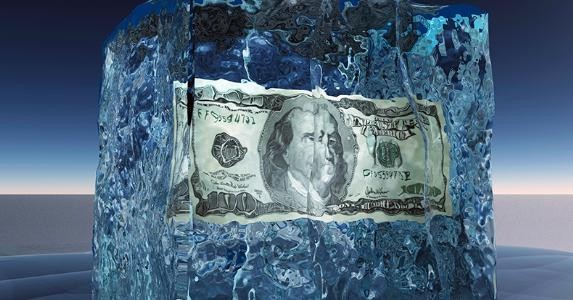How safe are money market funds Bankrate Inc
Post on: 7 Август, 2015 No Comment

How safe are money market funds?
Posted: 2 pm ET
It’s difficult to imagine money market funds as posing a substantial risk to the economy, but they’re actually central to the mechanisms that keep the wheels of Wall Street greased.
Because of their systemic importance, economists and researchers have been pressing regulators to strengthen the rules governing money market funds. One of the most contentious ideas involves scrapping the fixed $1 share price in favor of a floating net asset value, or NAV. Like other mutual funds, the fluctuations in the price of money funds would be transparent.
Critics of that plan say that a lot of the institutional investors who invest in money market funds will no longer be able to use them due to their mandates to stick to certain types of investments. For instance, the asset management company BlackRock surveyed its institutional money market investors and found that 55 percent of them say that without a zero-loss tolerance, they would no longer be able to use the product. That’s according to a letter to the Securities and Exchange Commission on the subject of money market fund reform dated September 12, 2013.
But here’s the question: Are money market funds actually the vehicles they purport to be?
Money market funds should not be treated as risk-free
A new post on the Federal Reserve Bank of New York’s blog, Liberty Street Economics, looks at previously released data showing that at least 29 MMFs did break the buck — or they could have if anyone had known that it happened. The sponsors of 28 of the money funds were able to shore up the losses of, on average, at least 2.2 percent.
The lone fund left holding a giant bag of oops was Reserve Primary Fund. When its sponsor couldn’t prop it up, it went down hard. Breaking the buck is a really big deal because money market funds implicitly guarantee that it won’t happen.
Money market funds are subjected to three types of risk, according to a 2010 paper by Patrick McCabe, an economist at the Federal Reserve, which the Liberty Street blog linked to.
- Portfolio risk: Despite the very safe investments that money funds are restricted to, they aren’t risk-free.
- The risk of a run on the fund: If investors with millions of dollars on the line get wind of a disturbance in the wholesale funding markets, they’re going to withdraw their money, which could trigger fire sales and more withdrawals, and it just spirals from there.
- Sponsor risk: Sponsor support is discretionary, according to McCabe’s report. After 2008 and the failure of the Reserve Primary Fund, investors may be wondering if the sponsor of their fund will prop it up if, or when, the next economic catastrophe happens. That uncertainty could lead to runs on funds.

From Liberty Street Economics:
…the industry’s reliance on implicit recourse to sponsors is systemically risky . because uncertainty about whether sponsors will come to funds’ rescue may precipitate runs. Hence, the data we have described underscore the need for robust and effective MMF reforms that would provide a form of stability to the MMF industry not predicated on voluntary and uncertain support from sponsors.
There’s no doubt that cash will always be cash; there’s not even a remote possibility that the dollars in my pocket will turn into, say, a stack of pancakes. But if sponsors can’t always bail out their money market funds, or there is a chance, however remote, that the fund won’t be worth a dollar, it’s not free from risk. Remember, in 2008 when it was really important for these funds to be what they purported to be, the U.S. Treasury Department had to step in and guarantee deposits. That effectively transferred the risks that investors should have known about to American taxpayers.
What do you think? Are money market funds safe enough for your money?
Get more Investing News with our free weekly newsletter .
Follow me on Twitter: @SheynaSteiner .
***
Senior investing reporter Sheyna Steiner is a co-author of Future Millionaires’ Guidebook, an e-book written by Bankrate editors and reporters. It’s available at all the major e-book retailers.














